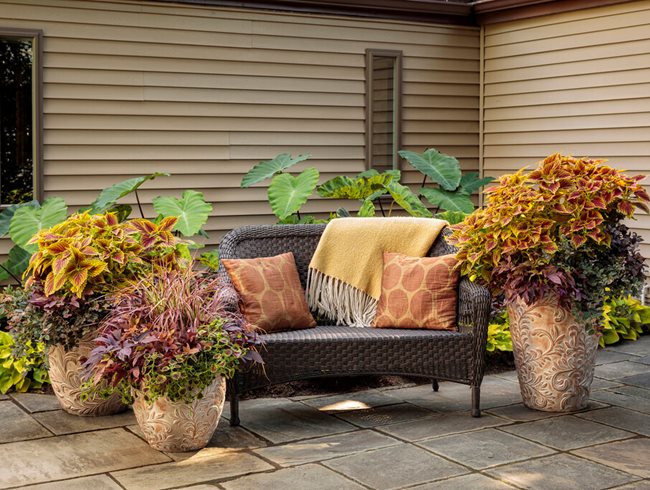What is a Tropical Patio?
A tropical patio is an outdoor living space that is designed to resemble a lush and vibrant tropical paradise. It features an array of exotic plants, bold colors, and natural materials that transport you to a tropical oasis. A tropical patio typically includes a mix of tropical plants, such as leafy palms, vibrant flowers, and bold foliage, creating a fantastic visual display.
One of the essential elements of a tropical patio is the use of a diverse plant palette. This ranges from plants with architectural foliage to those with flamboyant foliage. Every component adds to the richness and texture of the overall space, making it a feast for the eyes. The plant selection also takes into account the amount of shade the patio receives to ensure that the plants thrive in their natural environment.
Tropical patios also make use of natural materials, such as bamboo, rattan, and teak, which complement the lush greenery around it. These materials also help to create a relaxed, tropical vibe that makes visitors feel like they are on vacation in their backyard.
Water features, such as a small pond or a fountain, are a key element in a tropical patio as they provide the sound of water or raindrops to build the experience of being surrounded by nature.
Professional landscape designers can help create a tropical landscape that blends with the existing outdoor space, creating a backyard paradise. They consider the size of the patio and the surrounding space to develop a tropical-themed garden that maximizes the patio area’s potential.
In conclusion, a tropical patio is a beautiful outdoor space that evokes a sense of calm and serenity while surrounding you with vibrant colors and lush foliage. By incorporating elements of nature, exotic plants, and natural materials, you can create a backyard tropical oasis that offers a perfect escape from the hustle and bustle of everyday life.
Benefits of Creating a Tropical Patio
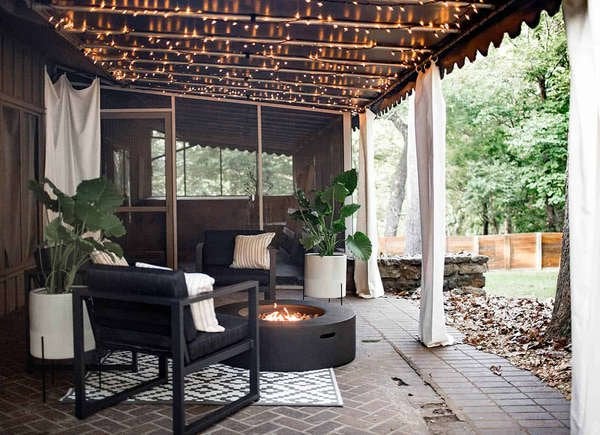
Creating a tropical patio can be a wonderful addition to any outdoor space, providing numerous benefits that go beyond just adding a pretty garden to your backyard. This type of patio can transform your outdoor oasis into a tropical paradise and offers a variety of advantages that can enhance your overall lifestyle.
One of the most notable benefits of creating a tropical patio is the sense of relaxation and peacefulness it can bring. The lush greenery, colorful foliage, and natural materials can create a serene atmosphere that encourages feelings of calm and tranquility. This can be especially beneficial for individuals who lead busy and stressful lives and need a place to unwind and recharge.
In addition to relaxation, a tropical patio can offer health benefits as well. Research has shown that being surrounded by nature can promote mental and physical well-being. Studies indicate that spending time in green spaces, such as gardens or parks, can reduce stress levels, boost mood, and even lower blood pressure. A tropical patio that incorporates a variety of plants and natural materials can provide a sense of connection to the natural world, resulting in a more significant sense of overall well-being.
A well-designed tropical patio can also be an excellent location for entertaining guests. With its vibrant colors, leafy plants, and natural textures, a tropical patio can create a welcoming and inviting atmosphere that is perfect for hosting gatherings. The sound of water features like fountains or ponds can create a relaxing ambiance that adds to the overall enjoyable atmosphere of the space.
Lastly, creating a tropical patio can increase the overall value of your home. A well-designed outdoor living space, including a tropical patio, can be a significant selling point for property buyers. A backyard oasis that is attractive, well-maintained, and functional can increase the overall appeal of your home, leading to faster and more profitable sales.
In conclusion, creating a tropical patio can offer many benefits, including improved relaxation, enhanced overall well-being, a perfect location for entertaining guests, and potential home value increase. With the right design, materials, and professional guidance, you can transform your outdoor space into a tropical paradise that brings joy, relaxation, and beauty to your home for years to come.
Plant Selection
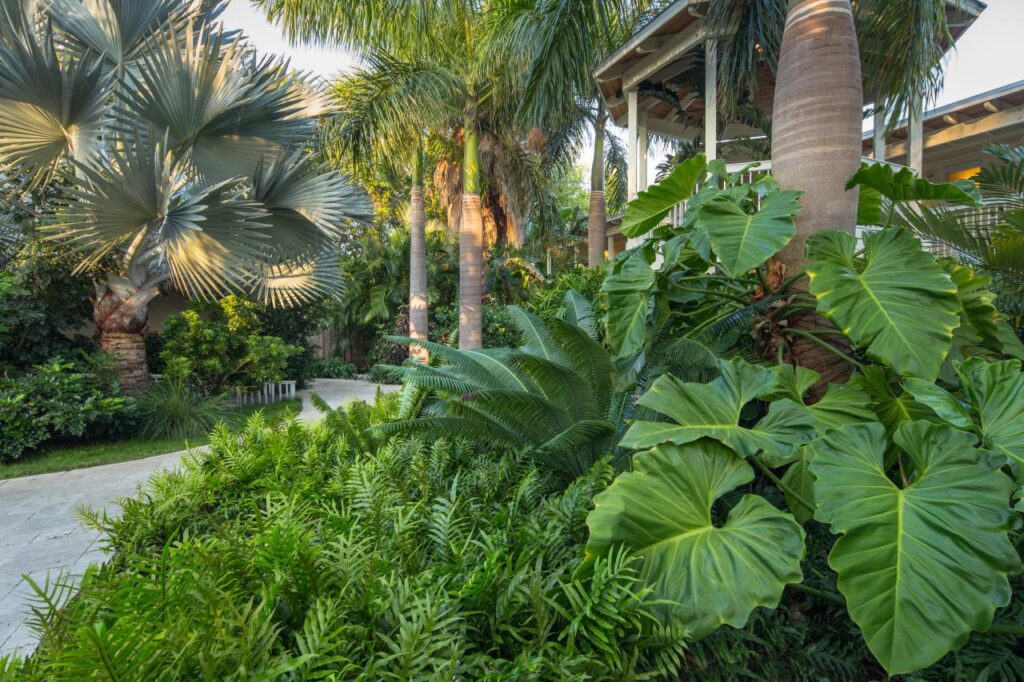
Plant selection is one of the most crucial aspects of creating a tropical patio. Choosing the right plants can make or break the overall aesthetic and atmosphere of the space. When selecting plants for your patio, consider important factors such as climate, lighting, and soil composition.
One essential element to achieving a tropical paradise is selecting native plants that thrive in your climate. For example, if you live in a hot and humid climate, plants such as palm trees, banana plants, and hibiscus will thrive in your environment. On the other hand, if you live in a cooler climate, you may want to consider tropical plants that are more cold-hardy, such as musa basjoo or ginger plants.
Lighting is another important consideration when selecting plants for your patio. Some tropical plants require full sun exposure to thrive, while others prefer partial shade. Be sure to research the lighting needs of the plants you are considering and adjust your patio’s positioning accordingly.
Soil composition is also a crucial factor to consider when selecting tropical plants. Many tropical plants require well-draining soil to prevent over-watering and root rot. Be sure to select plants that are compatible with the soil type in your area and consider adding soil amendments or potting mix to ensure healthy growth.
When choosing plants, consider incorporating a mix of leafy and colorful varieties. Bold foliage and vibrant flowers can add pops of color and create an eye-catching display. Consider using plants with various leaf sizes and textures to create visual interest and depth.
In addition to aesthetic considerations, also think about the practicality of your plant selection. Consider how much maintenance your chosen plants will require and whether they are suitable for your level of gardening experience. If you have a busy schedule or are new to gardening, you may want to select low-maintenance varieties that require minimal care.
Overall, selecting plants for your tropical patio requires careful consideration of various factors. By choosing native varieties that thrive in your climate, finding the right balance of lighting and soil composition, and incorporating a mix of leafy and colorful plants, you can create a lush and inviting outdoor space.
Shade-Loving Plants
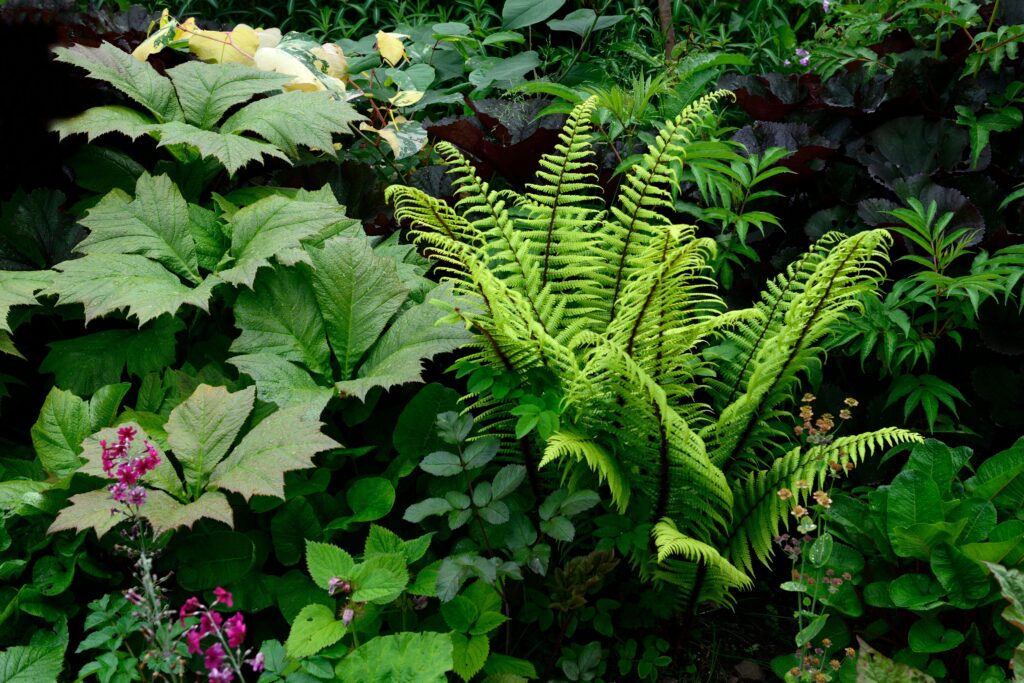
Shade-loving plants are a great addition to any garden, especially if you have limited sunlight in your backyard. These plants can grow and thrive in areas that are protected from direct sunlight, such as under trees, in the north-facing side of buildings, or in shaded corners of your outdoor space.
One of the primary advantages of shade-loving plants is their versatility. They come in various colors, textures, shapes, and sizes, so they can be used to create a variety of garden styles, from formal to naturalistic. Shade-loving plants are also great for adding highlights and accents to darker areas of the garden, creating contrast and depth.
One popular shade-loving plant is the Hosta. This plant’s broad leaves come in different colors and patterns, including blue, green, white, and gold. Hostas also produce pretty flowers in shades of pink, lavender, and white. Hostas are easy to grow, low maintenance, and tolerant of various soil types, making them an excellent choice for beginners.
Another popular shade-loving plant is the Fern. Ferns are well-known for their lacy foliage, which adds texture and softness to shady spots. These plants come in different sizes and shapes, from small, delicate Maidenhairs to large, bold Ostrich ferns. Ferns also require little maintenance and are often used in woodland gardens or under tall trees.
Begonias are also great shade-loving plants, known for their bright and showy flowers. These plants come in a variety of shades, including white, yellow, orange, red, and pink. Begonias also have different foliage colors, from green to bronze and variegated. Begonias are generally low maintenance and can be grown in containers or hanging baskets for added visual appeal.
When it comes to selecting shade-loving plants for your garden, it is essential to consider the soil type and moisture level of the area, as well as the amount of shade it receives. Some plants, such as Ferns and Hostas, prefer moist soil, while others, such as Begonias, prefer well-draining soil. With the right care and selection, shade-loving plants can transform even the darkest corners of your outdoor space into a lush and beautiful oasis.
Colorful Foliage
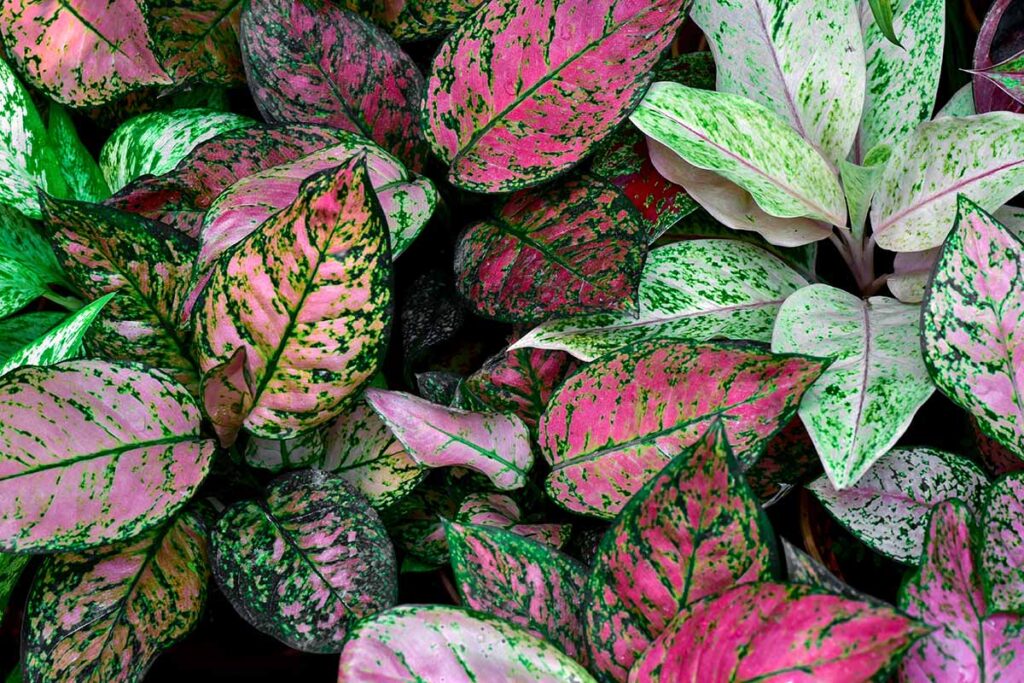
Colorful foliage is an excellent way to add vibrancy and interest to your outdoor space, especially if you’re looking to create a tropical paradise. With a wide range of bold, flamboyant foliage options available, you can easily create a lush and vibrant backyard oasis that looks and feels like a tropical escape.
One key element of creating a tropical-themed garden is choosing plants with a variety of leaf sizes, shapes, and colors. Bold leaves and colorful plants such as the Musa Basjoo, commonly known as the Japanese Banana, are an excellent choice to create a tropical oasis. The Musa Basjoo has broad, leathery leaves that range in color from bright green to deep burgundy, adding a pop of color and texture to your outdoor space.
In addition to Musa Basjoo, palm trees are another great choice for creating a tropical garden. Not only do they offer a unique shape to your garden, but they also have vibrant green leaves that add an element of freshness and energy to your outdoor space.
Another popular option for adding pops of color to your garden beds is understory plants. These are plants that grow under the taller trees and add a touch of color and variety to shade-loving areas. Shade-loving plants like the Begonia, with their showy flowers in hues of pink, yellow, and red, are especially well-suited for this purpose.
When designing your tropical patio, it’s also essential to pay attention to the plant palette and ensure that the colors remain consistent. It’s best to choose a few complimentary colors and incorporate them in different plants throughout your outdoor space. For example, pairing bold red and yellow Coleus plants with the blue-green foliage of Heuchera creates a harmonious and visually appealing effect.
To create a truly stunning tropical-themed garden, consider using natural materials like stone, wood, and water features. The sound of water, such as a rain shower or waterfall, adds an element of tranquility to your garden and enhances the tropical vibe.
Professional landscape designers can help you with incorporating all the essential elements discussed above to create a stunning tropical garden. In no time, you will have created a backyard paradise that feels like a tropical paradise vacation.
Bold Foliage
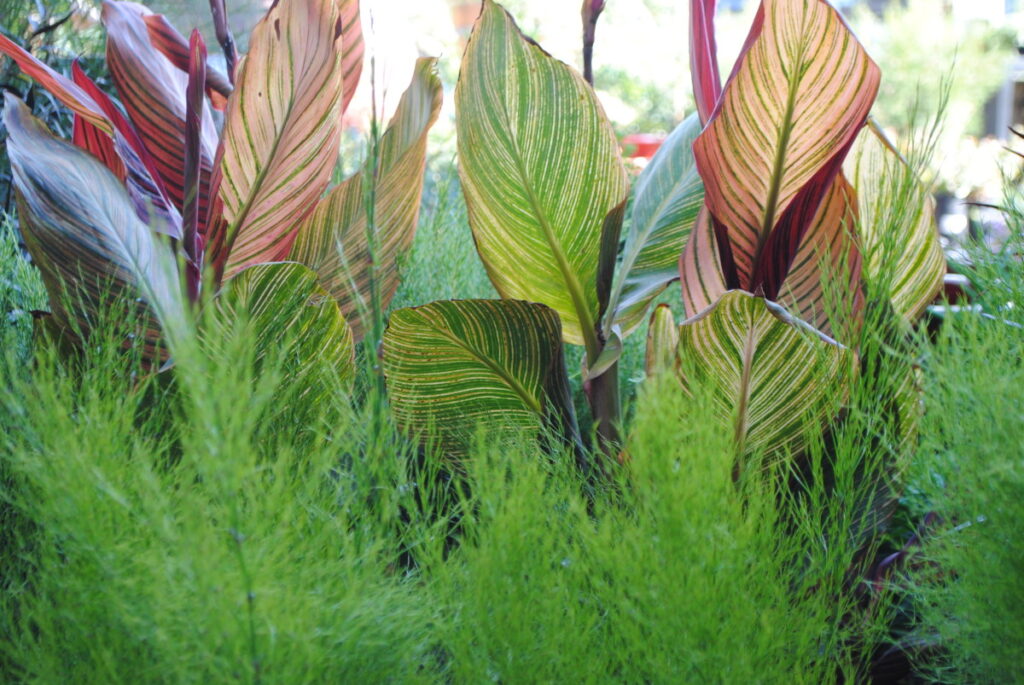
When it comes to creating a truly eye-catching garden, incorporating bold foliage is a surefire way to make a statement. Bold foliage can add a dramatic flair to your outdoor space, elevating the visual appeal of your garden and giving it a unique personality.
What is bold foliage, you ask? It refers to the large, broad, and textured leaves of certain plants that catch the eye and create a sense of visual interest. These plants often have vibrant, striking colors, adding a pop of brightness to their surroundings.
A classic example of bold foliage is the elephant ear plant. This tropical plant is known for its massive, heart-shaped leaves that can grow up to three feet long. The lush green leaves of the elephant ear plant add a tropical vibe to any garden and can complement other tropical plants like palms or hibiscus.
Another popular plant with bold foliage is the hosta. These plants are known for their broad, textured leaves that come in a range of colors, from deep greens to blues, purples, and even white. Hostas can also grow to impressive sizes, making them perfect for filling out garden beds or adding height to your outdoor space.
For those looking to add a bit of color to their garden, the coleus plant is a great choice. These plants have bold, brightly colored leaves in shades of pink, red, yellow, and more. They grow well in partial shade and can be used as accents to create a vibrant and visually appealing garden space.
Bold foliage plants require minimum maintenance and are ideal for beginners and seasoned gardeners alike. They can thrive in a variety of conditions and can adapt to your local climate with ease. With their large and textured leaves, bold foliage plants provide a great contrast to other plants in your garden, adding depth and uniqueness to your outdoor space.
In conclusion, if you’re looking to make a statement with your garden, bold foliage plants are a must-have. With their vibrant colors and large textured leaves, they will undoubtedly stand out and give your outdoor space a unique personality.
Musa Basjoo
Musa Basjoo, commonly known as the Japanese banana plant, is a tropical plant that can add a touch of exotic beauty to any outdoor space. This plant is native to Japan and is one of the most cold-hardy banana plants in the world, making it a popular addition to gardens in regions with cooler temperatures.
The Musa Basjoo is a clumping plant that can grow up to 15 feet tall, with leaves that can reach up to six feet long. The leaves are a vibrant green color and have a beautiful, tropical look that can enhance any garden. One of the key features of this plant is its ability to regrow from its underground rhizome after frost damage, which makes it a great choice for gardeners living in colder climates.
In addition to its hardiness, the Musa Basjoo also produces lush, tropical-looking flowers that can add a touch of color and vibrancy to any outdoor space. The flowers are a bright yellow color and bloom in the late summer or early fall. Once bloomed, the flowers are followed by small, inedible fruit that gives the plant an added visual interest.
Another benefit of the Musa Basjoo is its ability to thrive in a variety of conditions. This plant can tolerate partial shade, making it suitable for gardens that do not receive full sunlight. It also prefers well-draining soil that is kept moist, which makes it a great choice for areas with high humidity.
To care for your Musa Basjoo, it is important to keep it watered and fertilized regularly. It is also recommended to provide some protection during the colder months, either by mulching around the base of the plant or by wrapping it in burlap.
Overall, if you are looking for a tropical addition to your garden that can withstand cooler temperatures, the Musa Basjoo is a great plant to consider. Its exotic appearance and hardiness make it a popular choice among gardeners.
Native Plants
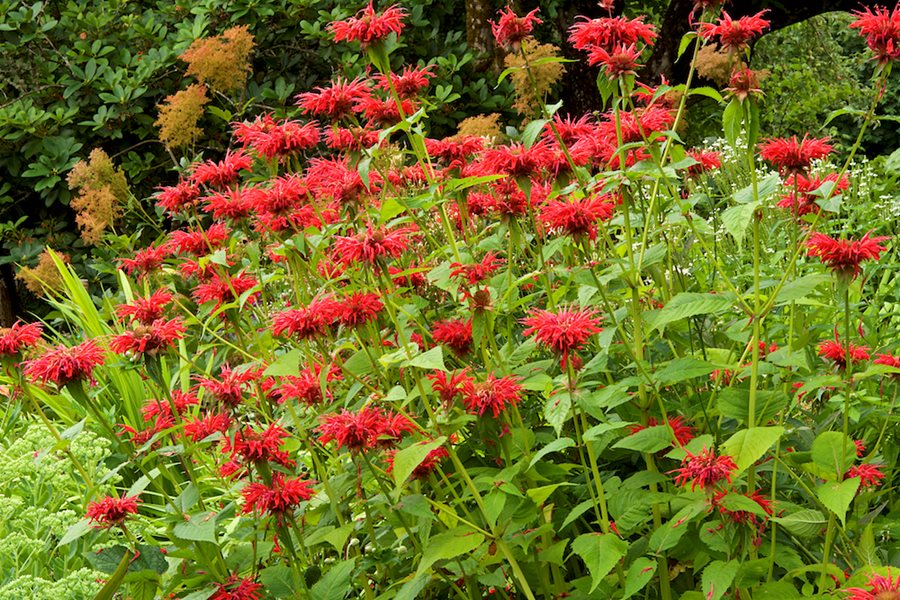
Native plants are defined as plant species that have evolved in a specific geographic region and have adapted to the area’s climate, soils, and wildlife. These plants have developed a unique set of characteristics that make them perfectly suited to thrive in their native environment.
One of the most significant benefits of using native plants is their ability to attract and support local wildlife. Native plants have established relationships with local pollinators, birds, and other wildlife, which can help maintain the ecosystem’s balance. Supporting these species by planting native plants contributes to the conservation of local biodiversity.
Native plants also have a lower maintenance requirement than non-native plants. Since these plants have evolved to adapt to their specific environment, they generally require less water, fertilizer, and other resources to grow successfully. Choosing native plants can be an excellent way to save both time and money on lawn maintenance while also helping to conserve natural resources.
Furthermore, native plants also bring a sense of place and history to a garden. By using plants that are well adapted to the local environment, homeowners can create a sense of continuity with the natural landscape around them. Growing native plants can help connect gardeners with the spirit and history of their region.
Lastly, native plants play a crucial role in the fight against climate change. By sequestering carbon and supporting local ecosystems, these plants help mitigate the adverse effects of climate change. Native plants also help to prevent soil erosion by providing ground cover and stabilizing the soil.
In conclusion, native plants are an excellent addition to any garden. With their diverse range of benefits, including lower maintenance requirements, support for local wildlife, and climate change mitigation, there are plenty of reasons to incorporate them into your garden design. When choosing plants for your yard, consider the benefits of using native plants to create a beautiful and sustainable landscape.
Palm Trees
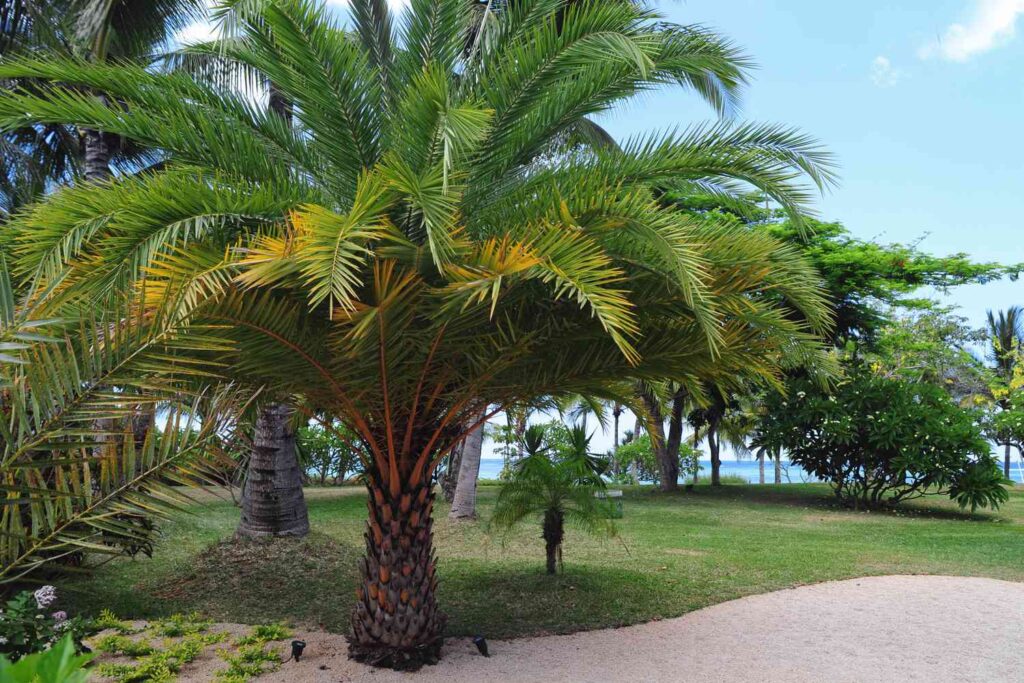
Palm trees are some of the most iconic and recognizable trees in the world. They are known for their tall and slender trunks, big and bold fronds, and can provide a distinct tropical or exotic feel wherever they are planted. These trees are a familiar element in coastal areas, beaches, and popular vacation destinations.
Aside from their aesthetic appeal, palm trees have a long history of significance in various cultures and industries. For example, the date palm, which is one of the oldest cultivated trees, is a significant food source in many parts of the world. The coconut palm, on the other hand, is prized for its valuable oil and multiple uses in many products.
Palm trees vary in size and shape, ranging from tiny dwarf varieties that grow up to a few feet tall to enormous species that can tower over 100 feet. Some of the most common types of palm trees include the queen palm, the coconut palm, the royal palm, and the date palm.
Palm trees are highly adaptable, and they can thrive in a variety of different environments. However, they do have some preferences that contribute to their optimal growth. For starters, they prefer warm, tropical climates with plenty of sunshine and adequate moisture. They can grow in sandy soils or even rocky areas, but they prefer well-draining soil and benefit from regular fertilization.
In addition to being beautiful, palm trees can also provide several benefits to the environment. They help to purify the air by absorbing carbon dioxide, producing oxygen, and trapping dust particles. They also contribute to erosion control by stabilizing soil with their extensive root systems.
In conclusion, palm trees are not just beautiful; they are also versatile and have contributed significantly to various aspects of human life. Whether it is for their aesthetic or practical value, palm trees remain enduring symbols of exoticness and tropical paradise. They are perfect for gardens, landscapes, or even as indoor plants, giving us an opportunity to enjoy a piece of the tropics all year round.
Designing the Space
If you want to make your patio look tropical, designing the space is essential. One of the essential elements of a tropical paradise is the use of natural materials. Start by incorporating materials like bamboo, stone, and wood into your decor. These materials will give your outdoor space a natural, tropical vibe.
When designing your outdoor space, consider incorporating pops of bright colors throughout. Use vibrant, colorful plants like heliconia, bromeliads, and hibiscus to create a tropical oasis on your patio. You can also introduce colorful cushions and outdoor furniture to help bring your patio to life and make it a comfortable space to relax in.
Another important element is the use of water features. The sound of water can evoke thoughts of a tropical paradise vacation and create a relaxing ambiance. Consider adding a water fountain or a small pond that you can surround with tropical plants and flowers.
When it come to tropical plants, there are many types to choose from, including native and tender plants, shade-loving plants, and understory plants. Musa basjoo or Japanese Banana is a great example of a tropical plant that can do well in partial shade and grow up to 14 feet tall, making it an excellent choice for creating a bold focal point on your patio.
Professional landscape designers can also help you create the perfect backyard paradise by choosing the right tropical garden ideas and laying out garden beds in a way that will maximize the impact of bold foliage and gorgeous plants. By using a plant palette with a mix of bold leaf sizes, you can help create a lush and flamboyant foliage that will instantly give your patio a tropical feel.
With these essential elements in mind, you can transform your patio into a tropical escape and create the backyard oasis you’ve always dreamed of.
Outdoor Space Requirements
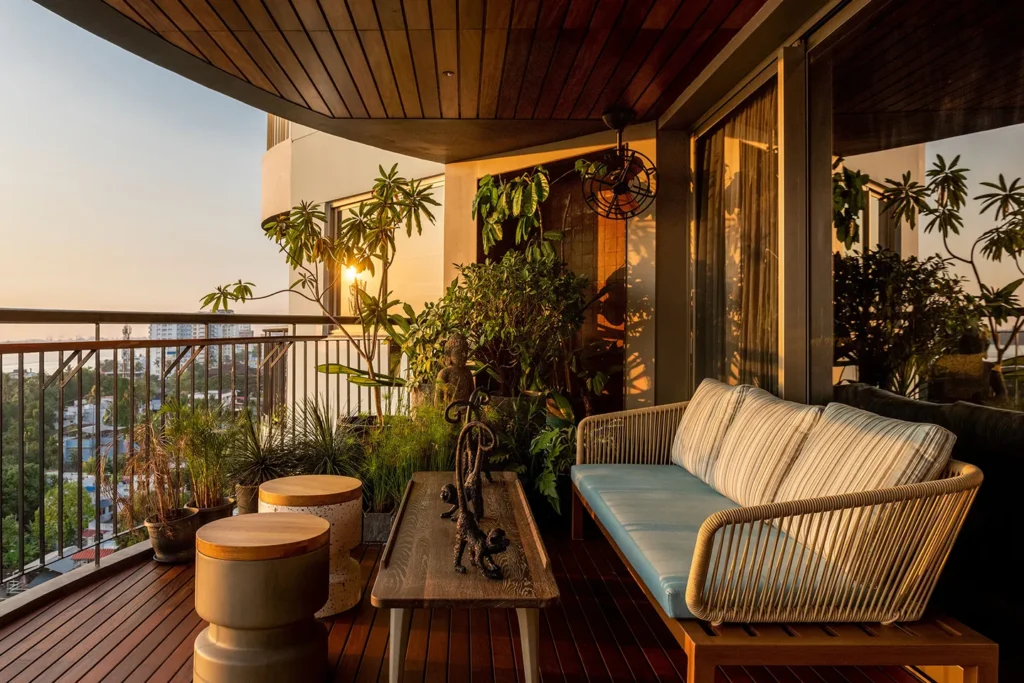
Creating the perfect outdoor space takes planning and consideration of various factors. Before venturing into designing your outdoor oasis, you must consider several requirements that make up a functional and inviting outdoor living area. Here are some important outdoor space requirements to consider:
1. Size and Shape: The size and shape of your outdoor space are perhaps the most critical factors to consider. The space available will determine what furniture and features you can add to your outdoor living area. It’s essential to measure the area accurately to ensure that everything fits comfortably.
2. Comfortable Seating: At the heart of every outdoor space is comfortable seating. Whether you want to relax with family or entertain guests, you need to have a comfortable place to sit. Choose durable and weather-resistant materials that can withstand the elements, such as aluminum, resin, or teakwood.
3. Lighting: Good lighting is essential to enjoy your outdoor space day or night. You can use a variety of lighting options like outdoor lamps, string lights, or torches to illuminate your outdoor area when the sun goes down. Solar-powered lights are also a great option to make your outdoor space eco-friendly.
4. Greenery: Adding some greenery to your outdoor space can soften up the look and make it more inviting. Consider using different types of plants, flowers, and even trees to give your outdoor space a more natural feel.
5. Privacy: Whether you live in a busy city or rural areas, privacy is an essential requirement for an outdoor space. You can add a fence or plant tall shrubs and trees around your outdoor living area to block unwanted views from the neighbors.
6. Adequate shade: It’s essential to have a place to escape from the harsh sunlight. Consider adding an awning, pergola, or umbrella to your outdoor space to provide adequate shade during the hot summer months.
7. Entertainment: Outdoor living areas are the perfect place to entertain guests or simply relax outdoors. Consider adding a fire pit, grilling station, or outdoor bar to your outdoor living area to make it more inviting for gatherings.
Whether you have a small balcony or a vast backyard, applying these requirements will help you make the most out of your outdoor space and enjoy it all year round. With proper planning, you can transform your outdoor space into a functional and inviting oasis that you will love to spend time in.
Garden Beds and Containers
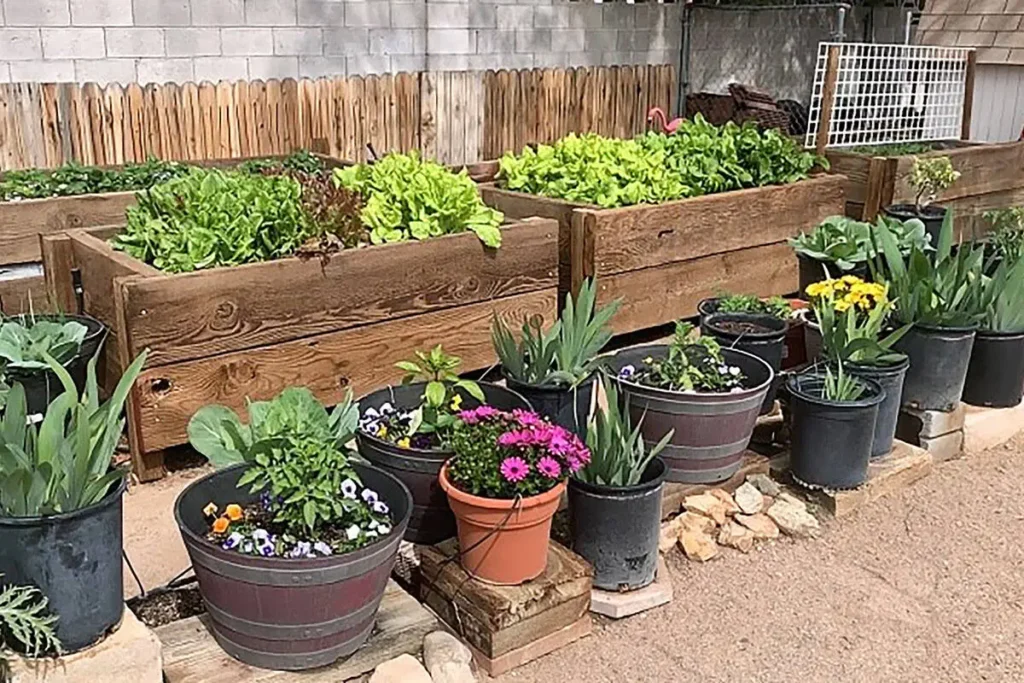
Garden beds and containers are essential elements in creating a tropical paradise on your patio. Whether you have limited space or a large outdoor area, you can create a lush and vibrant tropical garden by adding garden beds and containers.
Garden beds are an excellent option if you have a larger outdoor space. You can create raised beds or plant directly into the ground. When selecting plants for your garden beds, consider using tropical plants that thrive in partial shade, such as the musa basjoo, palm trees, or native plants. These plants can add vibrant colors and bold foliage to your garden beds, creating a tropical oasis on your patio.
If you have limited space, containers are an ideal option for growing tropical plants on your patio. You can use a variety of containers, such as terra cotta pots, plastic pots, or even recycled containers. When selecting containers, consider the size of the plant and the amount of space required for the roots to grow. Also, make sure to use the right type of soil for each plant, as tropical plants require soil that retains moisture and provides drainage.
When selecting plants for your containers, consider using plants that require partial shade and are suitable for humid conditions. You can use a mix of shade-loving plants and tender plants with bright tropical colors to create an eye-catching display. Consider using plants with different leaf sizes and flamboyant foliage to add depth and texture to your containers.
To create a tropical-themed garden, consider using natural materials like bamboo, stone, and water features. You can also add understory plants and architectural foliage to create a layered effect and add more depth to your garden beds and containers. You can also add the sound of water, such as raindrops or a small fountain, to create a tranquil and relaxing atmosphere.
Professional landscape designers can help you create a tropical landscape that is both beautiful and functional. They can design a backyard paradise that incorporates key elements like garden beds, containers, natural materials, and soundscapes to create a tropical escape that you’ll love to spend time in. Patios should not look drab, and with garden beds and containers, you can create a backyard space that is both vibrant and relaxing.
Essential Elements of a Tropical Oasis
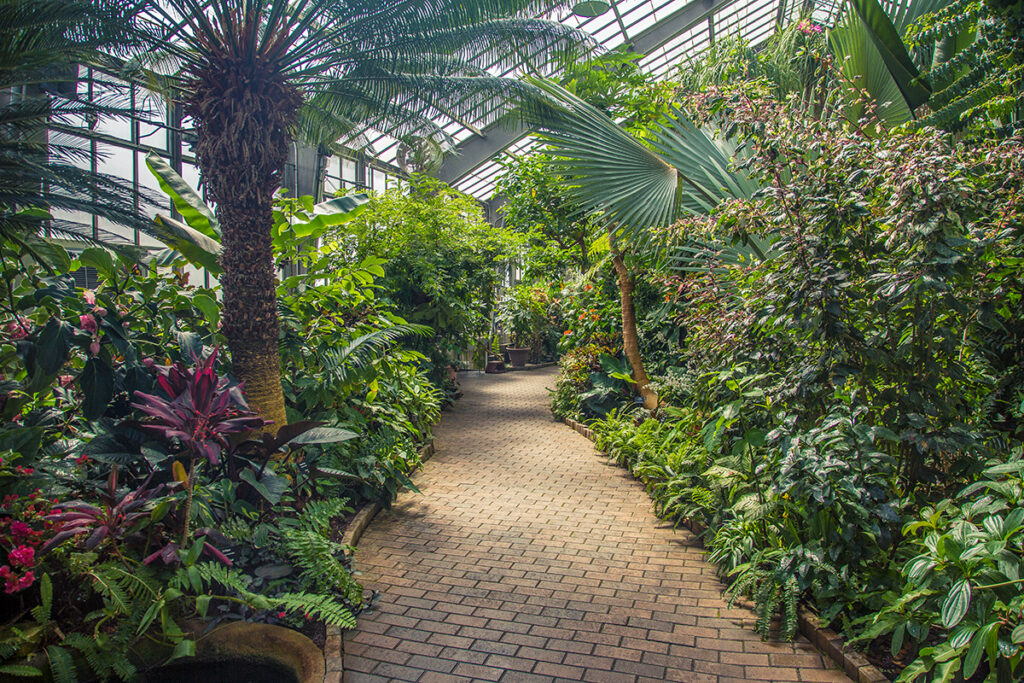
If you’re dreaming of creating a tropical oasis in your backyard, there are a few essential elements that you’ll need to consider to make it a reality. While you’ll undoubtedly want to incorporate lush and colorful foliage and perhaps some palm trees into your design, there are other key factors to consider that will help create the perfect tropical escape.
First and foremost, think about the sound of water. In a tropical paradise, there’s nothing quite as soothing as the sound of waterfalls, fountains, or even the gentle trickle of a stream. When designing your oasis, consider adding a water feature that will help create a relaxing and peaceful atmosphere. This can be as simple as a small tabletop fountain or as elaborate as a large koi pond.
Another essential element is shade. While some tropical plants thrive in full sun, others require partial or even full shade. Consider incorporating a pergola, shade sails, or even a thatched roof into your design to create a comfortable and shaded area for lounging.
When selecting plants for your tropical oasis, consider using a mix of bold foliage and vibrant colors. Look for plants that are well-suited to the climate in your area and that can handle the humidity levels that are typical in a tropical environment. Native plants can make an excellent choice, and you can also use containers to create a portable garden that can be moved as needed.
Finally, consider the materials you’ll use to create your oasis. Natural materials like bamboo, stone, and textured wood can add a touch of rustic charm to your space. You might also incorporate tropical-style accents like tiki torches, bright textiles, and ornamental statues to complete the look.
By incorporating these essential elements into your design, you’ll be well on your way to creating a tropical oasis that will transport you to a relaxing and beautiful space far from the stresses of everyday life. With the right plants, décor, and ambiance, you can create a backyard paradise that will be the envy of your friends and family.
Natural Materials for an Authentic Feel
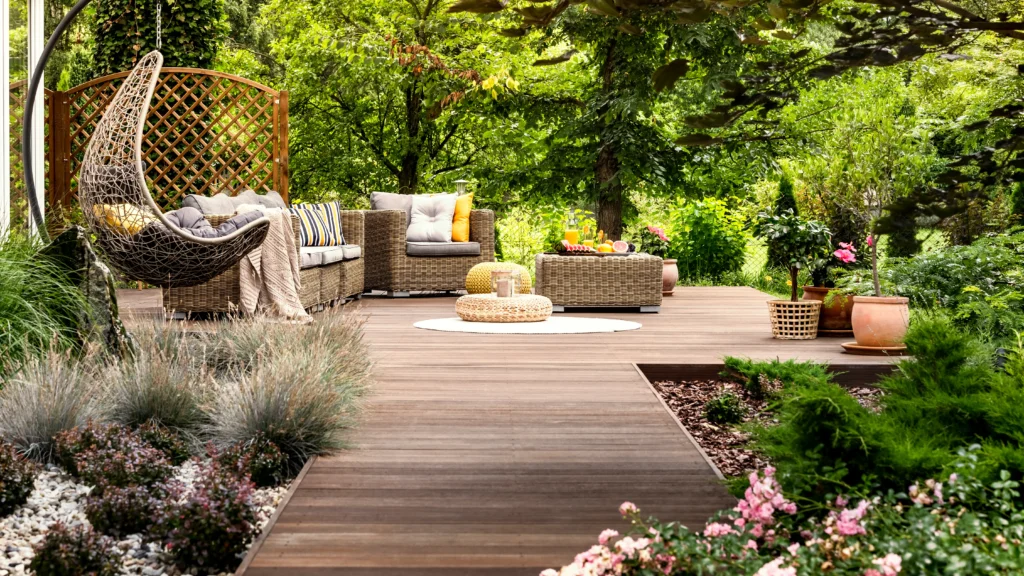
If you’re looking to create an outdoor space that feels authentic and grounded, incorporating natural materials is a must. From lush foliage to textured stone, natural elements can help you feel more connected to the world around you and create a serene, calming atmosphere.
One of the easiest ways to incorporate natural materials into your space is by using wood. Whether you opt for a wooden deck, pergola, or garden bench, natural wood adds warmth and texture that can’t be replicated by synthetic materials. Cedar and redwood are excellent choices for outdoor use since they’re naturally resistant to rot and insects, and they have an attractive, natural grain pattern.
Stone is another natural material that can add an organic feel to your outdoor space. From smooth river stones to rough-hewn flagstone, there’s a range of options to choose from that can add visual interest and texture to your patio or garden. You might consider using stone pavers to create a walkway or patio area, or incorporate a stone fireplace or fire pit to provide warmth and ambiance on cooler evenings.
Bamboo is another natural material that can add a touch of tropical charm to your outdoor space. This fast-growing plant is highly sustainable and can be used to create everything from outdoor furniture to fencing and privacy screens. Its slender, elegant stalks are perfect for adding a bit of height and vertical interest to your garden beds or planters.
Finally, don’t forget about water as a natural element. Whether you opt for a small tabletop fountain or a larger pond or waterfall feature, the sound of running water can help create a calming and restorative atmosphere. Plus, water is an essential element for many plants, so incorporating a water feature into your space can help your garden thrive.
By incorporating natural materials like wood, stone, bamboo, and water into your outdoor space, you can create an authentic, grounded, and serene atmosphere that helps you feel more connected to the natural world. Feel free to mix and match these elements to create a space that’s uniquely you!

